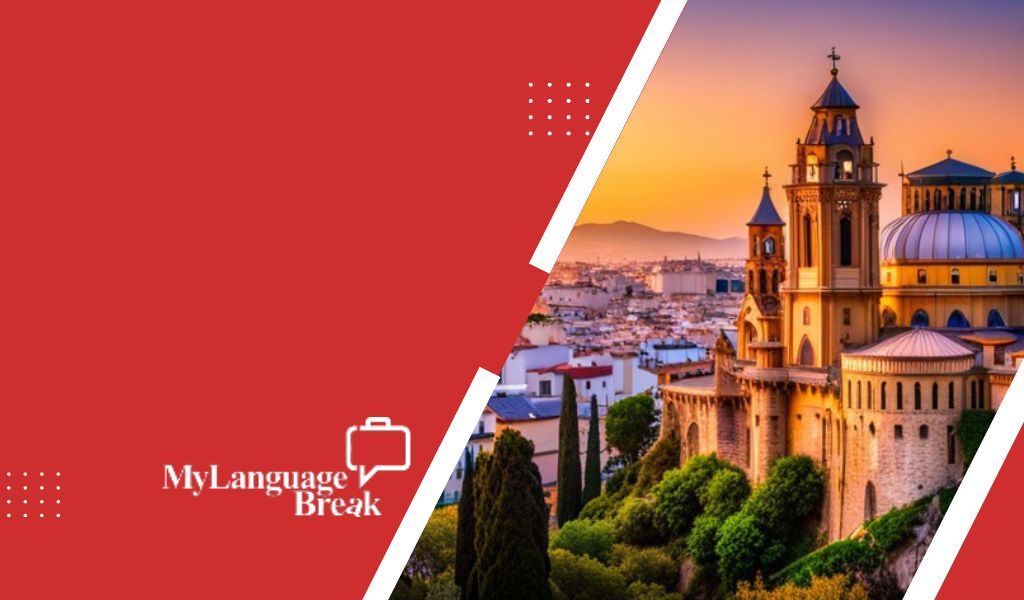Is it true you can try to pick up any language in 6 months? This is not easy. There are many who have tried and failed, while others have succeeded. What’s the secret?
Some say that the key to success is total immersion. Others suggest it’s all about dedication and hard work. And, of course, there are those who recommend studying for hours every day until your brain hurts. The truth is probably a mix of all three things—not just one or two exclusively—but no matter what the secret may be, one thing should be abundantly clear: learning a new language isn’t an easy feat. Certified teachers and language experts recommend that we study our target language for two hours a day for at least six months. However, nearly all of us can’t dedicate that much time to learning another language. So what do we do to be able to learn languages as fast as possible?
How fast can you become fluent in Spanish? I decided to experiment with achieving fluency in Spanish by using a method very different from the traditional way. In doing so, I ended up becoming fluent at a faster rate than any others who have been studying the language using this method.
What’s the Key to Learning a New Language?
The first thing I need to explain is the difference between studying and learning. Both are methods of memorizing new words, grammar rules, and phrases. For example, let’s take the phrase “I like to play soccer.” Both studying and learning should yield you this phrase. However, when you first learn that phrase, it should not take you very long—maybe one or two days—to memorize it. However, if after three months (or six months) of hard work your memory of the phrase cannot be recalled at all, then you’re probably not really learning the meaning of the words themselves. You’re just merely memorizing them.
The key to learning a new language is to understand and memorize its underlying and underlying and underlying and underlying concepts. Those who fail to grasp the principles of a foreign language end up wasting their time studying it for years without actually learning anything.
The human mind is like a sponge. The more you (a) consume (b) the more you (c) absorb. For example, if you want to learn Spanish, then I can’t emphasize enough that you need to watch TV shows and movies in Spanish dubbed into the language. This will allow it to be understood very quickly, which is essential in order for any language (and especially Spanish) to be comprehended.
How Can You Learn a Language Faster?
This is a question many people ask and the truth is there is no real answer. Some people learn languages faster than others and vice-versa. The way they do it is very different from person to person. One man I know is Portuguese and speaks French fluently. He knows thousands of words in French and can read it just as well as he can speak it. He’s been studying the language for over 10 years and to him learning a new language is just like learning how to walk: there is no real secret behind it, you just do it.
The other person I know learned Spanish in Brazil taught himself how to speak it, and now lives in Spain. Everybody thinks he’s a native speaker because his accent sounds so good.
When it comes to language learning, the only thing you can do is put in the hard work and commit to really learning the language. If you’re willing to dedicate the time and effort, then you’ll eventually get there!
I learned Spanish in three months because I watched TV shows like Friends (and other sitcoms) with subtitles on.
The Secret Method I Used to Become Fluent in Spanish Within 6 Months
I came across a very interesting and unique book that detailed a method of learning foreign languages nearly 1000% faster than the normal rate. The author, Benny Lewis, wrote a book called “Fluent in 3 Months.” Before becoming fluent in Spanish, he was fluent in 7 different languages (English, French, Italian, German, Russian, Portuguese, and Swedish). Surely there is no one else like him!
I decided to read this book and it really opened my eyes to what true language learners do on a daily basis. God knows how many books I wasted money on trying to learn Spanish before I came across this one.
What does the book teach us? The main thing it teaches is that you should shake up your daily routine by doing everything in a foreign language. For example, if you want to learn Spanish then you need to write down a list of things that interest you and start doing them all in Spanish. This will help you get used to speaking and writing extensively in a foreign language, which is essential to learning a new language quickly.
The book also teaches us that if you have a regular job, then you should stop switching back and forth between languages. Most people who are bilingual do this all the time. For example, they answer the phone in English then switch to Spanish to talk to their customers. That is not true fluency! True fluency is being able to have an argument about politics in Spanish while answering the phone in Spanish and speaking with your spouse about dinner without thinking of what you’re saying in English.
No matter what language you intend to learn or how much time you have, you should follow this guide and not deviate from it. Below, I’ll detail the steps that worked for me.
- Step 1: Memorize a lot of words. Each chapter I’d write down a list of 100 new words every day until I had memorized about 1,000 words. Then I would put them in a Word document to make sure they stay with me after the book was finished. Learn most if not all of these words with A1 pronunciation.
- Step 2: Watch TV shows and movies in Spanish with subtitles. If you don’t have a television, use Youtube. I suggest using Google Chrome to search for the keywords “Español subtitulos,” which will give you links to various Spanish subtitled TV shows and movies online. You can also buy these online or download it. I usually watched about four or five episodes of a show everyday. The first one was usually always free to watch. If you can’t find that, then you can use online services like Netflix. The important thing is that you watch it in its original language with subtitles so your brain doesn’t get confused.”
- Step 3: Take online classes. Take online classes offered by Duolingo, which allows you to learn real vocabulary in context with videos and quizzes. I don’t suggest taking these classes until you finish the book because it’s much faster this way. It took me about 10 hours total to complete all of the lessons for Spanish 3 in Duolingo. Once you finish the book, then go through all of your grammar rules and phrases that were taught in class in Spanish using these classes.
- Step 4: Read news articles in the language every day. This is what really turned me into the language at a fast pace. Read a new article every day and make a mental note of all the words you don’t know. I did this more often than watching TV shows. I read articles from CNN, BBC, The New York Times, and even from major newspapers from each country in Latin America that published articles in the Spanish language.
- Step 5: Write emails and letters to your friends in the language every day. Give it at least a 100% effort to keep this up. This has been the most effective tool for me for learning a foreign language quickly. I wrote to my friends and family and even people I had just met online who spoke Spanish and were willing to help me out.
- Step 6: Write down any words that you don’t know over 100 times each until you understand them perfectly well.
3 More Ways to Fuel Your Learning Even More
- Never stop listening to Spanish music and singing along. It really helps to know the words, even if you’re not a good singer. I would listen to Spanish radio stations online and sing along with the songs like it was my favorite rock band.
- Read a different book in each language you want to learn every day. This will reinforce your learning and give you a reason to practice every day in that particular language.
- Learn a new phrase each day that you want to learn. For example, “bueno!” means “good!” but it’s pronounced “bwee-oh-noh.” Record it onto your phone or make a poster or something so that you remember how to say it every time you see it.
Conclusion
If you want to learn Spanish quickly, then don’t worry about the grammar rules. Whenever you confuse two words, just Google them and there will be tons of examples on how to get the meanings of both words. The key is to say the words out loud and pronounce them correctly so that your brain can learn it via context. Also, if you get confused about which word to choose in a sentence, always ask people who speak Spanish well “Pues qué?” (Which, What?). They will give you a quick and easy way to know which way is right.
Remember, language is a tool for a better life. Start by following this guide and see how much more you can learn in the next few months. Good luck!
What are your best tips for speaking Spanish? Leave a comment below.

